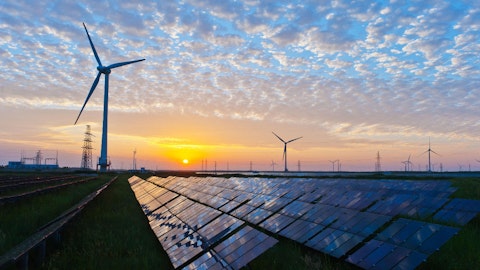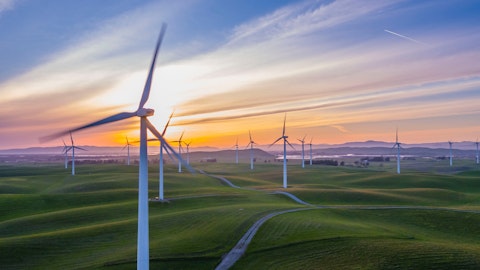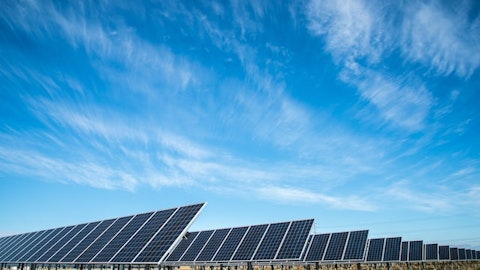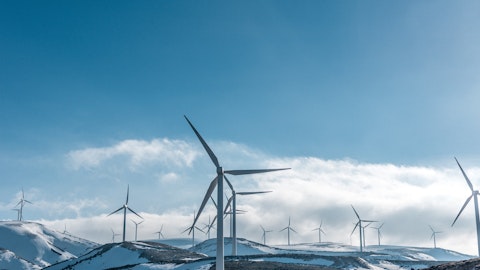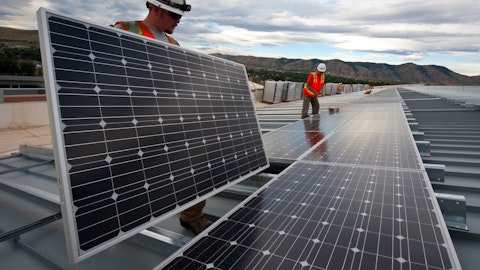Yan Zhuang: Well, so the current expansion plan, excluding the silicon capacity expansion, is actually — it’s covered by different sources, so such as for Thailand and the U.S. manufacturer, the proposal on the — the U.S. manufacturing projects are covered, mostly covered for the customer down-payment. And for other CapEx expansion plans, it’s a combination of either the operating income or the bank lendings. So for those CapEx expansion, we don’t really depend on the China IPO and the silicon capacity is more longer term. So we will decide after we’re listed here in China. So return on investment on different CapEx expenditures are — depends. Ingot, cell and the module, it’s really very detailed breakdowns. And you can follow up with Isabel later for details. But overall speaking, I think we’re okay on our CapEx coverage and cash flow.
Vikram Bagri: Can I ask one follow-up on batteries and storage also? It seems like the volumes came in a little light relative to the guidance relative to our expectations. What were the drivers? Was there like a constraint in supply that drove the volumes down? And I see the backlog in North America has increased a lot, the early-stage pipeline. If you can comment on what are the drivers of that increase? Are those new partnerships? If you can also comment on what part of North America, you’re seeing that increased demand from, what geography you’re seeing that increased demand from?
Yan Zhuang: Okay. So that’s a good question. Actually, as you know, the utility scale storage projects are — we have — actually, they have a much longer lead time on sales. So whatever project that we need to execute, for example, right now, in the first half of 2023, the contract actually was closed a year ago or even longer. So — and so by — as you remember, around beginning of 2022, we had a pretty dramatic change in the — on the supply chain of storage. But that was the time that our sales level, we decided to switch from white label product to our own developed SolBank product. So that was a transition. So we need to work on certification, bankability stuff. So that’s why we — the pipeline we have today is more towards second half of this year, not first half of this year.
So in terms of recognition and shipments, it’s kind of very much skewed to the end of this year. And however, if you look at our signed contract, the signed contract carries about USD 1 billion already. And that number is increasing every quarter rapidly. So we’re expanding our total storage SolBank capacity towards 10-gigawatt hour by . Reason behind this, we know next year, we’re not going to have enough capacity. So next year will be the real growth. This year is a transition. And we have the total pipeline of 23-gigawatt hour for utility storage system integration projects. So we know that next year, where we’re going to reach either 10-gigawatt hour or close to that number next year already. So this is the situation. Hopefully, this answers your question.
Operator: Our next question is from the line of Philip Shen with ROTH MKM.
Philip Shen: Congrats on the IPO approval. Can you remind everyone how much you plan on raising and what is the rough valuation you guys are targeting? I recall $600 million to $700 million at a $4 billion to $5 billion valuation for just CSI Solar. And can you remind us what the plan is for the use of proceeds? I know you addressed it a little bit earlier, Yan. But I was wondering if you could give a little more color. And then finally, can you talk through the next steps? I know you gave a little bit of color, Shawn, on that with the expectation of the IPO completion in Q2. But is there some more detail that you can share in terms of what to expect ahead such as the road show and timing and things like that?
